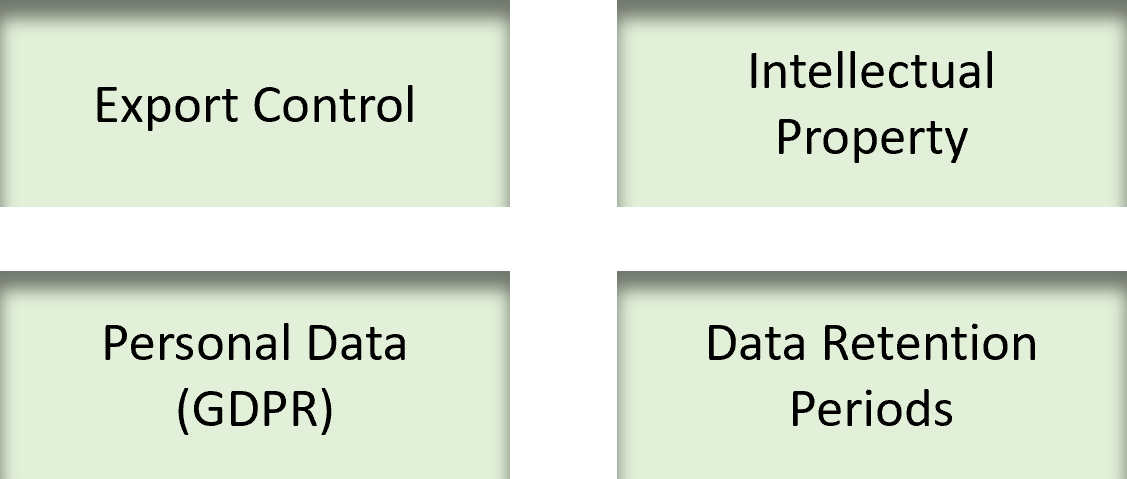

10.08.2023 | Blog How companies identify their sensitive data
Companies have a responsibility to handle sensitive data appropriately. If employees accidentally, carelessly, or even intentionally send intellectual property, such as design data, to unauthorized internal or external recipients, this can result in financial losses or severe legal consequences. If employees have access to personal information that they should not see according to the General Data Protection Regulation (GDPR), or if companies store personal data without consent, this can lead to significant fines.
The challenge of identifying and classifying sensitive data
Locating sensitive data is a challenge: not all data is transparently located in structured databases such as ERP or CRM systems, often the data is hidden in files containing unstructured data such as emails, text documents or spreadsheets. Finding this unstructured information is a crucial hurdle when the metadata required for thematic capture is outdated, incomplete, incorrect, or simply missing. In addition, the number of documents in organizations is constantly increasing and they are distributed and stored across different IT systems: For example, they slumber in file systems, corporate portals, wikis and various cloud platforms.
The versatile role of enterprise search systems
Enterprise search systems offer a solution to this problem. Classically, they are used for efficient enterprise-wide information search. Their AI-based capabilities make them ideal tools for both data discovery and data classification. Using connectors, they capture and search various data sources. Using intelligent text analysis in combination with machine learning and deep learning, they index the content of documents thematically - regardless of whether the documents contain the information in structured or unstructured form.
Why is software-based data discovery and classification important?
Data indexing and data classification by enterprise search software such as from IntraFind supports key activities, processes, and tools in the enterprise. Among them:
- Search - facilitates audit trail compliance and the quick retrieval of documents needed for investigation, to demonstrate compliance with specific compliance rules, or to meet information requests from regulatory agencies.
- Data discovery - enables employees to quickly find information and immediately understand how to use, share, or delete it.
- Data retention and archiving - Retention rules can also be specific to different classifications. Data security becomes more manageable and realistic when the volume of data is reduced, and eliminating data that is no longer needed mitigates legal risks. If a document doesn't exist, it can't be leaked or lost. Streamlining data also reduces the cost of storing and protecting data.
- Protect data – with the help of data classification flags data protection tools can effectively verify who is accessing sensitive information and who is violating a policy and can take any necessary corrective action accordingly.
As the amount of data created and processed by companies continues to grow, so do the demands on data management. This includes building data discovery and classification capabilities to identify where data is located, and which data is sensitive.
Automated discovery and classification of sensitive data
Companies can have documents that are subject to internal compliance regulations or legal requirements automatically recognized and classified by the enterprise search solution. This works very quickly and reliably, even with large volumes of data. The classifications are then stored by the system in the form of metadata attached to the relevant documents. Thus, companies can locate and label (assign keywords) files that contain intellectual property such as patents or inventions, are subject to legal requirements for secrecy or export control or contain personal information in accordance with GDPR.
Classic use cases for subsequent labeling/indexing of documents

Technical solution based on data labels
The labels created by the Enterprise Search solution allow companies to implement technical solutions to protect sensitive data. For example, they can deploy solutions that prevent the sending and uploading of files that contain intellectual property or restrict employee access to documents that contain personal information. The labels also facilitate the work of those responsible for the GDPR. All relevant data in the company can be reliably located and systematically organized, and data can be deleted, encrypted or moved. In addition, they can answer requests for information according to GDPR quickly and comprehensively.
Software-supported data labeling in conjunction with a data protection solution enables organizations to proactively manage their data and protect it from unauthorized access. This means they are always in control of which data can be shared and with whom. The software recognizes information in documents according to the organization's own or generally applicable compliance rules and classifies the documents accordingly. It generates AI-based metadata for each document, such as confidentiality levels, document type, author and other classifications. These classifications form the basis for further data use within and outside the organization.
Enterprise Search as a central information structure
The application possibilities as a tool for sensitive data discovery and classification show that enterprise search software shows its strength in business-critical information processes and offers a central infrastructure to provide intelligent information. Its use cases range from effective knowledge management to simplified compliance with internal organizational and legal requirements to Big Data analyses.
Bottom line: By using enterprise search systems, organizations can not only effectively protect their sensitive data, but also gain better control over their information and ensure compliance. It is critical that enterprises and government agencies understand the importance of identifying and classifying sensitive data and take appropriate steps to stay on top of their data.
Related Articles


How companies can improve the quality of their data

Improve data quality: Companies need to take action now
The author
Franz Kögl
